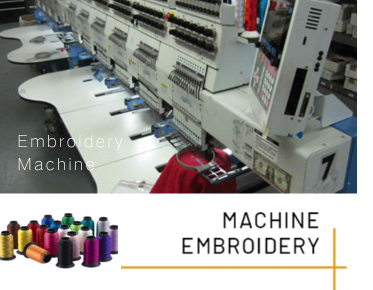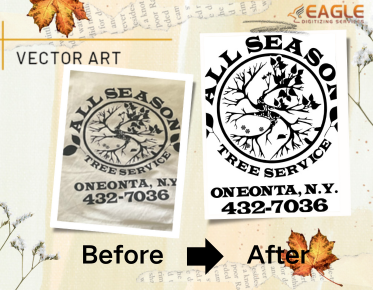Knockdown Stitch Demystified: Enhance Your Embroidery
What is Knockdown Stitch?
Knockdown stitch is a specialized embroidery technique used to create a smooth, flat surface on high-pile fabrics before the primary design is added. This stitch essentially "knocks down" the fibers of the fabric, providing a stable foundation for detailed embroidery. The result is a clean, polished design that stands out beautifully against the textured background.
Why This Technique is Gaining Popularity
Knockdown stitch is gaining traction among embroiderers for its versatility and the professional finish it offers. As more people explore embroidery on a variety of fabrics, including those with high piles like terry cloth and velvet, the need for techniques that ensure stability and clarity has become apparent. Knockdown stitch meets this need, providing an easy and effective solution.
Understanding Knockdown Stitch
The Basics of Knockdown Stitch
At its core, a knockdown stitch involves laying down a layer of stitches in a grid or fill pattern over the fabric before the main embroidery design is applied. This layer compresses the fabric fibers, preventing them from poking through the finished design and ensuring a smooth embroidery surface.
How It Differs from Other Embroidery Techniques
Unlike traditional embroidery methods that may struggle with high-pile fabrics, knockdown stitch specifically addresses the challenges posed by such materials. It differs by prioritizing the preparation of the fabric surface, ensuring that the primary design remains intact and visually striking, regardless of the underlying texture.
Common Applications for Knockdown Stitch
Knockdown stitch is commonly used on items like towels, bathrobes, and plush toys—essentially any project involving high-pile fabrics. It's also useful for designs on fleece, velvet, and even some types of knitwear. This technique ensures that detailed designs remain clear and prominent.
Benefits of Using Knockdown Stitch
Enhanced Texture and Depth
Adding Dimension to Your Designs
Knockdown stitch not only stabilizes the fabric but also adds an extra layer of texture and dimension to your designs. The contrast between the flattened background and the raised embroidery can create a visually dynamic effect, making your work more engaging and sophisticated.
Creating Visual Interest with Knockdown Stitch
This technique allows for creative exploration in texture manipulation. By experimenting with different densities and patterns of knockdown stitches, you can achieve various visual effects that add interest and uniqueness to your embroidery projects.
Improved Stitch Stability
Reducing Fabric Puckering and Distortion
One of the significant benefits of knockdown stitch is its ability to reduce fabric puckering and distortion. Providing a stable foundation ensures that the fabric remains taut and smooth, preventing unwanted movement during the embroidery process.
Ensuring Long-Lasting Embroidery
Knockdown stitch helps in creating durable embroidery that withstands regular wear and tear. The added stability prevents the design from shifting or warping over time, ensuring that your projects maintain their pristine appearance.
Stability in Various Fabric Types
While particularly beneficial for high-pile fabrics, knockdown stitch also enhances stability on other challenging materials like knits and loosely woven fabrics. This versatility makes it a valuable technique for a wide range of embroidery projects.
Perfect for High-Pile Fabrics
Tackling the Challenge of Fuzzy Fabrics
High-pile fabrics, such as terry cloth and velvet, present unique challenges due to their texture. Knockdown stitch effectively tames these fuzzy surfaces, creating a manageable base for detailed embroidery work.
Best Practices for Using Knockdown Stitch on Terry Cloth and Velvet
When working with terry cloth and velvet, using a dense, even knockdown stitch is essential. Opt for a mesh or fill pattern that thoroughly covers the area to be embroidered, ensuring that the fibers are sufficiently compressed.
Increased Versatility
Using Knockdown Stitch in Different Embroidery Styles
Knockdown stitch isn't limited to any specific style of embroidery. Whether you're working on traditional monograms, contemporary patterns, or intricate artistic designs, it enhances the versatility and adaptability of your projects.
Combining Knockdown Stitch with Other Techniques
This technique can be seamlessly integrated with other embroidery methods. For example, combining knockdown stitches with applique or 3D puff embroidery can create multi-dimensional designs that are both stable and visually striking.
Enhanced Visual Appeal
Highlighting Key Design Elements
Knockdown stitch helps highlight key elements of your design by providing a contrasting background. This contrast makes the primary embroidery stand out more vividly, drawing attention to the intricate details and craftsmanship.
Making Your Embroidery Stand Out
Incorporating a knockdown stitch can significantly enhance the visual appeal of your work. The smooth, stable background it creates allows for sharper, more defined embroidery, making your designs truly pop.
Getting Started with Knockdown Stitch
Essential Tools and Equipment for Knockdown Stitch
To get started with knockdown stitch, you'll need a few key tools:
● Embroidery Machine: Make sure it supports custom stitch settings.
● Hoops: Appropriate for the size of your design.
● Stabilizers: Both temporary and permanent types, depending on your fabric.
● Embroidery Threads: High-quality threads that match or contrast with your fabric.
● Software: Digitizing software to create or modify knockdown stitch designs.
Setting Up Your Embroidery Machine for Knockdown Stitch
Setting up your machine involves selecting the knockdown stitch pattern and adjusting the stitch density to suit your fabric. Ensure your fabric is tightly hooped, and choose the correct stabilizer to support the knockdown stitch and the main embroidery design.
Creating Your First Knockdown Stitch
Knockdown stitch is a beginner-friendly technique that doesn't require advanced skills to implement. With a little practice, even novice embroiderers can achieve professional-looking results.
Step-by-Step Guide to Creating a Knockdown Stitch
1. Prepare Your Fabric: Secure the fabric in an embroidery hoop or frame to ensure it remains taut.
2. Choose Your Pattern: Select a knockdown stitch pattern that suits your design and fabric type.
3. Apply the Knockdown Stitch: Use your embroidery machine to lay down the knockdown stitches over the design area.
4. Embroider Your Design: Once the knockdown stitch is in place, proceed with your primary embroidery design.
Tips for Beginners: Avoiding Common Mistakes
Beginners should start with simple designs to understand how the knockdown stitch works. Ensure that the fabric is hooped tightly to prevent shifting. Also, test your settings on a scrap piece of fabric to fine-tune the stitch density and coverage before starting your main project.
Optimizing Your Knockdown Stitch
Adjusting Density and Coverage
Adjust the density of your knockdown stitches to achieve the perfect balance between coverage and fabric stability. Too dense, and the fabric may become stiff; too sparse, and it may not adequately tame the fibers. Experiment with different settings to find what works best for your specific material.
Balancing Stability and Design
While the knockdown stitch provides stability, it should not overpower the main design. Use a color that blends with your fabric to make the knockdown layer less noticeable, focusing attention on the primary embroidery.
Using Knockdown Stitch on Different Fabrics
Best Practices for Using Knockdown Stitch on Plush Fabrics
For plush fabrics like towels and blankets, use a dense knockdown stitch to ensure the fibers are completely flattened. This will prevent any part of the design from getting lost in the fabric's texture. Match the thread color to the fabric for a smooth finish.
Techniques for Thin and Stretchy Materials
When working with thin or stretchy fabrics, use a lighter knockdown stitch to avoid stiffening the fabric. Additionally, choose a stabilizer that provides support without adding bulk, ensuring that the fabric maintains its natural drape.
Knockdown Stitch in Design
Incorporating Knockdown Stitch into Your Embroidery Designs
Integrate knockdown stitches into your designs by creating a base layer that mirrors the shape of your main embroidery. This technique works well for designs with fine details and intricate patterns that need a stable background to shine.
Enhancing Visual Appeal with Knockdown Stitch
Use knockdown stitches creatively to add texture and depth to your designs. For instance, you can layer knockdown stitches in different directions or combine them with other stitch types to create a unique visual effect.
Advanced Knockdown Stitch Techniques
Layering Knockdown Stitch for Depth
Create depth in your embroidery by layering knockdown stitches. Start with a basic layer to flatten the fabric, then add additional layers in different directions to build up a textured base. This technique works especially well for complex designs that require a sturdy foundation.
Combining Knockdown Stitch with Other Stitches
Mix knockdown stitches with satin stitches, fill stitches, and other decorative stitches to enhance your design. This combination can add dimension and interest, making your embroidery more dynamic and visually appealing.
Troubleshooting Knockdown Stitch Issues
Fixing Common Problems: Puckering and Tension
Puckering and tension issues are common when using knockdown stitches. To fix these problems, ensure your fabric is hooped correctly, use the appropriate stabilizer, and adjust the machine’s tension settings. A properly balanced stitch will lay flat and smooth.
Ensuring Consistent Quality in Your Stitches
Consistency is key to professional-looking embroidery. Regularly check your machine’s settings, maintain your equipment, and practice on test fabrics to ensure that your knockdown stitches are uniform and reliable.
Practical Applications of Knockdown Stitch
Personalizing Towels and Blankets
Knockdown stitches are perfect for personalizing towels and blankets. The stitches create a smooth base, allowing names, monograms, and intricate designs to stand out against the plush fabric.
Creating Durable and Attractive Clothing
Use knockdown stitches on clothing to create durable and attractive embellishments. This technique is ideal for adding logos, patches, or decorative elements to garments, ensuring that the designs remain sharp and intact through wear and washing.
Knockdown Stitch for Home Décor Projects
Enhance home décor items like cushions, linens, and table runners with knockdown stitch embroidery. The technique ensures that your designs remain crisp and vibrant, even on textured or high-pile fabrics.
Adding Professional Finishes to Cushions and Linens
Give your cushions and linens a professional finish with knockdown stitches. This technique helps your embroidery stand out, adding a polished and high-quality touch to home accessories.
Creative Uses for Knockdown Stitch
Exploring Unique and Innovative Applications
Think outside the box and explore unique applications for knockdown stitches. Use them in unconventional projects like embroidered art pieces, fabric book covers, or even custom upholstery to add a distinctive and creative touch.
Incorporating Knockdown Stitch into Unconventional Projects
Incorporate knockdown stitches into projects like fabric sculptures, wearable art, and mixed-media pieces. The added stability and texture can enhance the overall aesthetic and durability of your creations.
Case Studies and Examples
Showcasing Successful Knockdown Stitch Projects
Look at successful knockdown stitch projects for inspiration. These examples can provide insights into how others have effectively used this technique, showcasing the versatility and impact of knockdown stitches in various applications.
Lessons Learned from Real-World Embroiderers
Learn from the experiences of real-world embroiderers who have mastered the knockdown stitch. Their insights and tips can help you avoid common pitfalls and achieve professional results in your own projects.
Knockdown stitches are an essential tool for achieving clean, professional embroidery on high-pile and textured fabrics. Understanding the basics, optimizing your settings, and experimenting with advanced techniques can elevate your embroidery projects.
Keep experimenting with knockdown stitches and other embroidery techniques. The more you practice and explore, the more skilled and creative you will become. Embrace the learning process and continue to push the boundaries of your embroidery artistry.



